Valleys in Bhutan exhibit an exquisite combination of natural beauty and cultural heritage. These valleys are characterised by emerald-green rice fields, ancient monasteries, traditional villages, and other places amidst mountains. Each valley gives a glimpse of the splendid traditions and breathtaking scenery of the country. The lively Thimphu Valley and the serene Phobjikha Valley are some of the places that welcome you to experience Bhutan’s famous Gross National Happiness firsthand. The valleys of Bhutan are ideal for capturing photographs, learning about the culture, or seeking a higher level of spirituality.
10 Most Beautiful Valleys In Bhutan
Below, we have listed the 10 most famous valleys in Bhutan, which are admired for their beautiful views and marvellous nature:
1. Paro Valley
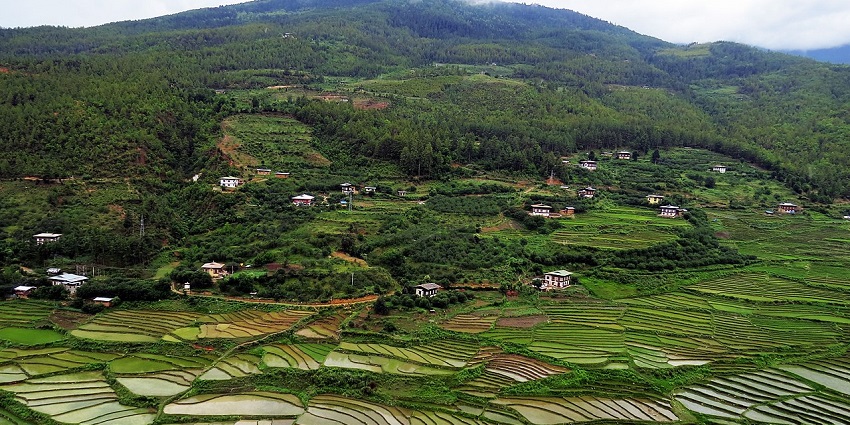
Photo: A. J. T. Johnsingh / Wikimedia Commons
Paro Valley, home to Bhutan’s only international airport, is located at an elevation of 2,200 meters. It features colourful rice paddies intertwined with classic farmhouses. Tiger’s Nest Monastery, or Paro Taktsang, is located 900 meters directly above the valley and clings to a cliff. There are also ancient temples, such as Kyichu Lhakhang, that have a rich cultural heritage. One of the major festivals, Paro Tshechu, is celebrated in spring, and it attracts a lot of tourists. The valley is perfect for hiking and offers trails surrounded by hidden monasteries and mountain viewpoints.
Major Attractions: Paro Taktsang, Rinpung Dzong, National Museum, Drukgyel Dzong
How To Reach: Direct flights to Paro International Airport
Suggested Read: Places To Visit In Paro
2. Phobjikha Valley
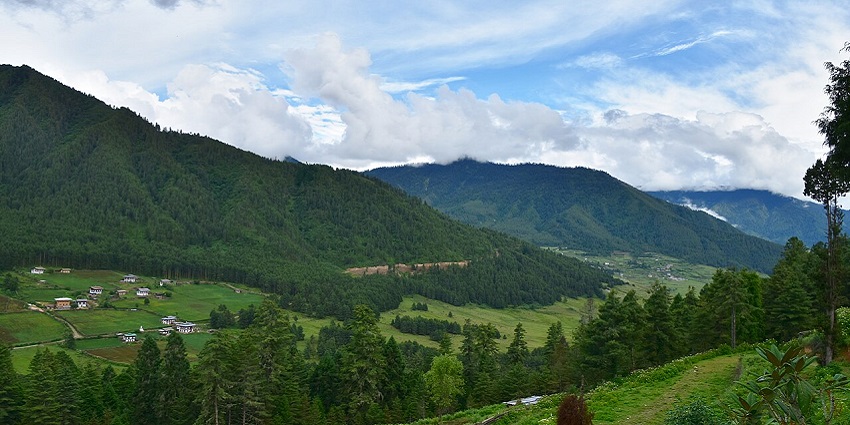
Photo: Prof. Mortel / Wikimedia Commons
Located in central Bhutan, this glacial valley is 3000 meters above sea level. The Phobjikha Valley serves as the wintering site for the nearly extinct black-necked cranes, which migrate from Tibet. The broad, U-shaped valley contains extensive wetlands and dwarf bamboo fields. Simple wooden houses depicting traditional Bhutanese architecture adorn the landscape. Gangtey Monastery, which was built in the 17th century, overlooks this beautiful valley in Bhutan. Sightseeing is possible on hiking trails that circle the base of the valley. The government earmarks this region for its ecological significance as a protected area. There are local programs aimed at fostering eco-tourism at the community level.
Major Attractions: Gangtey Monastery, Black-necked Crane Center, Nature Trails, Khewang Lhakhang
How To Reach: 4-hour drive from Thimphu
3. Punakha Valley
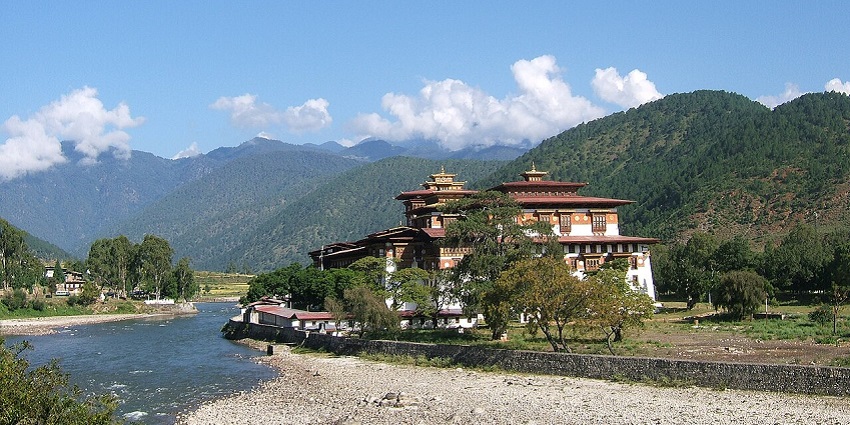
Photo: Cfynn / Wikimedia Commons
Punakha Valley lies at a lower elevation of 1,200 meters, which gives it a warmer climate. This fertile valley comprises two major rivers, Mo Chhu and Pho Chhu. The rice terraces are beautiful green patches of fields that are located on the slopes of the hills. At the river junction stands the eye-catching Punakha Dzong fortress, which is a splendid specimen of Bhutanese architecture. Chimi Lhakhang, the ‘fertility temple’, is well known among couples for its blessings. There are white-water rafting options on the rivers of the valley. This valley is of cultural relevance as it was historically the capital of Bhutan. In the spring, farmers in the region cultivate tropical fruits such as oranges and bananas.
Major Attractions: Chimi Lhakhang, Khamsum Yulley Namgyal Chorten, Suspension Bridge, and Punakha Dzong
How To Reach: 3 – hour drive from Thimphu
Suggested Read: Top Places To Visit In Punakha
4. Bumthang Valley
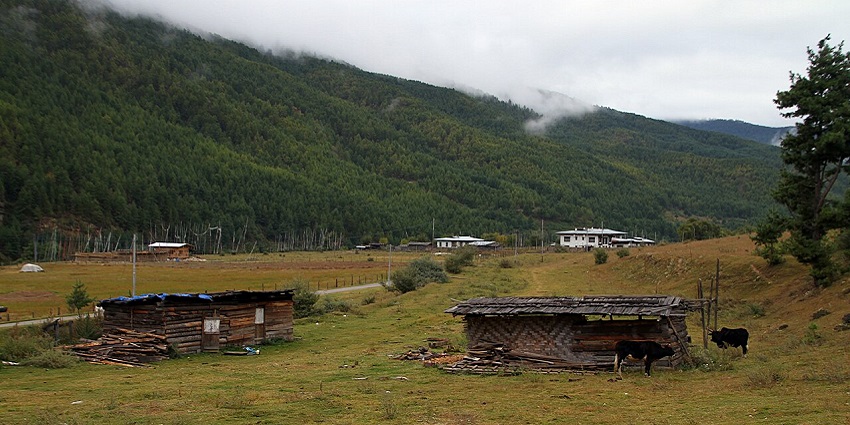
Photo: Gerd Eichmann / Wikimedia Commons
Bumthang consists of four smaller valleys and is often referred to as “Little Switzerland”. This region acts as the spiritual heartland of Bhutan since it houses numerous ancient temples and monasteries. This region is fertile and has apple orchards along with buckwheat fields. Swiss-style cheese and Red Panda beer, which is famous in Bhutan, are produced in this region. It also contains landmarks from the 7th century, such as Jambay Lhakhang, known for its splendid fire festival. Hiking trails connect sacred sites throughout the largest valley in Bhutan. The cool and pleasant summer months are conducive to high-altitude recreation because of the elevated temperatures in the region spanning 2600-3000 meters. As the most culturally rich part of Bhutan, Bumthang contains a dense accumulation of important historic landmarks.
Major Attractions: Jambay Lhakhang, Membar Tsho (Burning Lake), Jakar Dzong, Kurjey Lhakhang
How To Reach: Domestic flights to Bumthang Airport or a 10-hour drive from Thimphu
5. Haa Valley
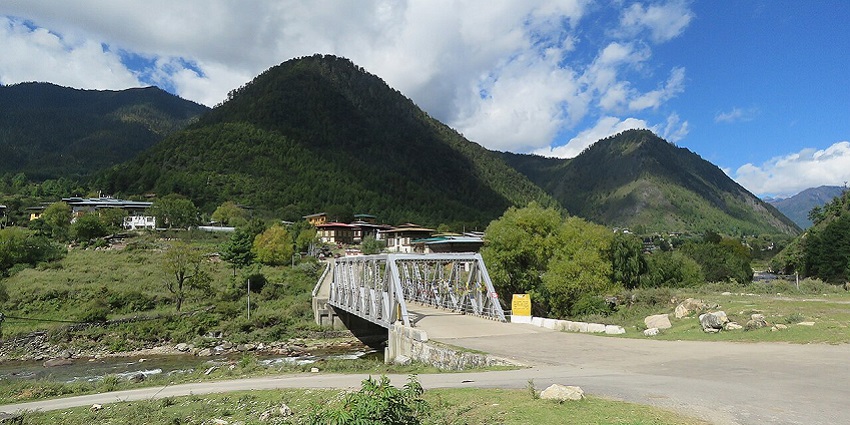
Photo: Vinayaraj / Wikimedia Commons
In 2002, tourism opened up in the remote Haa western valley, which remains among the least explored valleys in Bhutan. The region is covered in dense forests of blue pine, which are a mountain range. Alongside the mountains, the valley contains three sacred temples also known as “White Temple, Black Temple, and Hay Temple”. For centuries, practices such as farming have remained unchanged, and summer brings a plethora of alpine flowers to the meadows. Located in the valley is the Haa Summer Festival, where local culture and nomadic lifestyles are exhibited. The military is present here due to the proximity to Tibet, and locals still practice animistic rituals fused with Buddhism.
Major Attractions: Lhakhang Karpo, Lhakhang Nagpo, Haa Wangchuklo Dzong, Tachu Goemba
How To Reach: 4 – hour drive from Paro via Chele La Pass
Suggested Read: Discover The Top Things To Do In Bhutan
6. Thimphu Valley
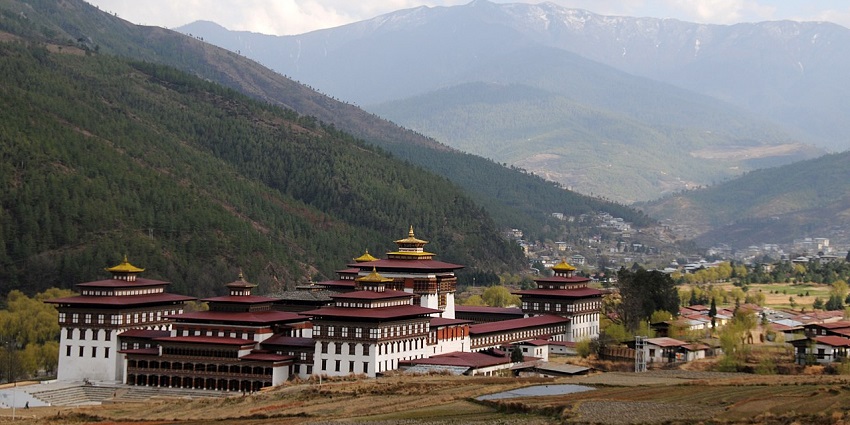
Photo: David Broad / Wikimedia Commons
As the capital valley of Bhutan, Thimphu is a mixture of both traditional and modern features. This busy valley contains the Wang Chhu River at an elevation of 2,320 meters. Even though it is the largest urban centre in Bhutan, cultural integrity is maintained through strict building regulations. In the region, one can find government buildings, monasteries, and the famous Buddha Dordenma statue. Local crafts, food, and textiles can be found at the traditional weekend markets as well as the surrounding hills, which offer day-long hiking trips. For most tourists, this valley is famous as it serves as the gateway into Bhutan. The country’s vast weaving traditions are exhibited in the National Textile Museum.
Major Attractions: Folk Heritage Museum, National Memorial Chorten, Buddha Dordenma, Tashichho Dzong
How To Reach: 1 – hour drive from Paro International Airport
7. Gangtey Valley
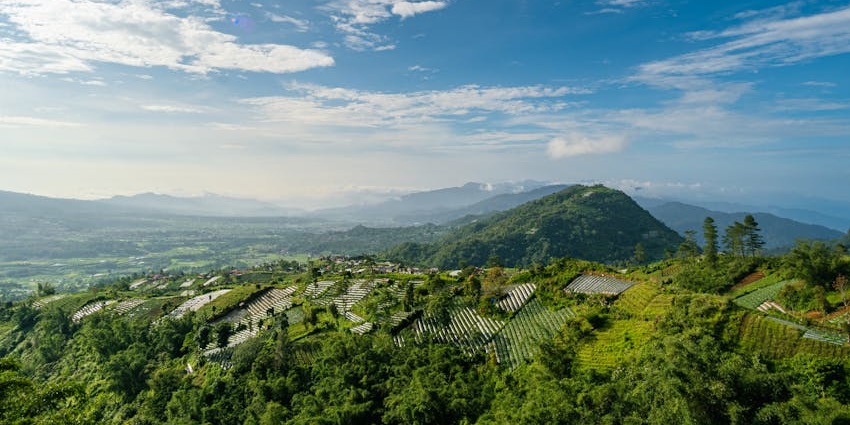
Photo: Faiz Majid / Pexels / Image For Representation Only
The upper area of the valley is often misinterpreted as Phobjikha, but Gangtey specifically refers to the upper area of the wider valley. The valley is located on the western slopes of the Black Mountains. Parts of Bhutan’s most breathtaking mountain views and landscapes are available in Gangtey. Stunning valley vistas can be easily reached from the Gangtey Nature Trail. Most inhabitants of the valley depend on potato farming as their primary source of income. For real homestay experiences, small, family-owned farmhouses invite guests. The cool, crisp weather throughout the year is caused by the high altitude of the valley, which is over 3,000 meters.
Major Attractions: Gangtey Goempa, Kuenzang Chholing Shedra, Nature Trails, Traditional Farmhouses
How To Reach: 5 – hour drive from Thimphu
Suggested Read: Discover The Top Places To Visit In Bhutan
8. Chumey Valley
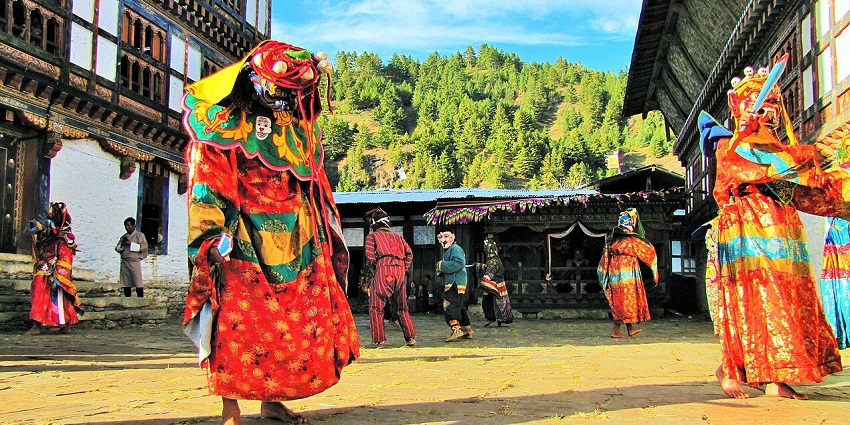
Photo: Chuck Moravec / Wikimedia Commons
The knitting of yathra is done in this relatively obscure valley in the central Bumthang. Chumey’s weavers specialise in colourful wool crafts with unique designs. The valley itself is quite narrow and is characterised by terraced fields and numerous small settlements. Sheep husbandry sustains the valley’s famous textile industry. The Chumey Lhakhang, built in the 16th century, is an important pagoda temple in the valley. Soft hiking paths link tiny settlements all over the valley. The entire process of weaving can be observed, including the dyeing of wool and the finishing touches on the textiles. The valley is the starting point for the wider Bumthang region when coming from the west.
Major Attractions: Yathra Weaving Center, Kharchu Dratshang, Domkhar Tashicholing
How To Reach: 30 – minute drive from Bumthang
9. Ura Valley

Photo: Abdul Kayum / Pexels / Image For Representation Only
Ura in Bhutan is famous for being the place with a cobblestone street pattern in the country. The valley is uniquely dotted with stone roofs, unlike the rest of the region, which uses wooden shingles. The shepherding of sheep and yaks is vital to the economy of the region. Around the valley’s edge, the spectacular forests full of rhododendrons blossom in spring. With winter comes heavy snowfall, which transforms the area into an alpine wonderland. The layout of this valley resembles an ancient European village. Locals in the area wear sheepskin vests, which are common in this region. This valley is part of ancient trading routes marked by the difficult Rodang La Trail.
Major Attractions: Ura Lhakhang, Ura Village, Shingkhar Village, Thrumshingla National Park
How To Reach: 1.5 – hour drive from Bumthang
Suggested Read: Bhutan Picnic Places For An Unforgettable Vacation
10. Lhuentse Valley
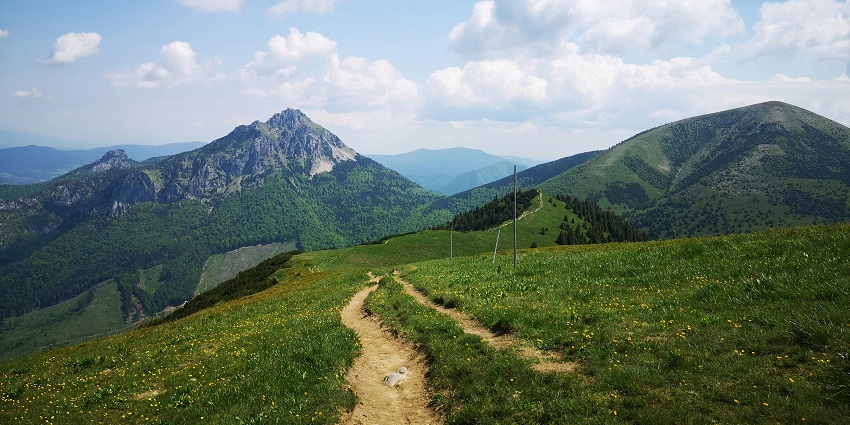
Photo: Viliam Kudelka / Pexels / Image For Representation Only
This secluded eastern valley is still one of Bhutan’s most remote regions. Lhuentse is also the ancestral home of the royal family of Bhutan. The valley is known for Kishuthara, the most complicated weaving style in Bhutan. Surrounded by mountains, this narrow river valley has a steeply dramatic scenery. Sacred Relics and antiquities are kept in Kurtoe Lhakhang. Authentic Bhutanese traditions are notably available in Lhuentse because of this valley’s remote regions. Unlike other parts of Bhutan, which are heavily touristic, village celebrations here are unique. Kuri Chhu River is well-known for fishing. The second-tallest statue in Bhutan, 173 feet of Guru Padmasambhava, is found at Takila.
Major Attractions: Lhuentse Dzong, Kilung Lhakhang, Khoma Village (weaving centre), Dungkar Nagtshang
How To Reach: 8-hour drive from Bumthang
The valleys in Bhutan blend natural beauty and cultural heritage. While every traveller is familiar with the stunning Paro Valley, the more secluded Lhuentse Valley is an example of what the hidden gems of Bhutan have to offer. Some famous valleys in Bhutan, like Punakha, feature stunning architecture, while others, like Phobjikha, are known for exceptional wildlife. Whether you are after spiritual enlightenment or wish to bask in stunning mountain views, Bhutan’s valleys never disappoint. Book your trip with TripXL so that these magical valleys of Bhutan can be explored under expert guidance.
Cover Photo: Goyaldevender / Wikimedia Commons


 WhatsApp
WhatsApp
 Twitter
Twitter









